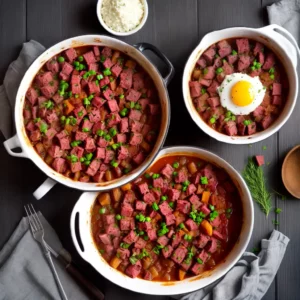How Many Calories in a Gram of Protein
Are you wondering how many calories are in a gram of protein? Let’s find out the answer in this informative measurement conversion guide.
When converting grams to calories, it’s important to know the calorie content of different macronutrients. For example, 1 gram of fat contains 9 calories, while 1 gram of carbohydrate or protein contains 4 calories. The grams-to-calories conversion can be used to follow a healthy diet, check energy requirements, and achieve a healthy weight.
Key Takeaways – How Many Calories in a Gram of Protein:
- 1 gram of fat contains 9 calories, while 1 gram of carbohydrate or protein contains 4 calories.
- The grams-to-calories conversion can be used to follow a healthy diet and achieve a healthy weight.
- To calculate calories from alcohol, multiply the volume in milliliters by the alcohol by volume percentage, and multiply the result by 0.78924.
- There are two main definitions of a calorie: the small calorie or gram calorie (cal) and the large calorie or kilocalorie (kcal).
- To convert grams to calories, multiply the number of grams by the appropriate conversion rate for each macronutrient.
Understanding the calorie content of protein is key to maintaining a balanced diet and achieving your health goals. With the knowledge of the conversion rates and the importance of protein in our diet, you can make informed choices to support your overall well-being.
The Calorie Content of Protein
To determine how many calories are in a gram of protein, we need to consider the calorie content of macronutrients. Protein, along with fats and carbohydrates, is one of the three primary macronutrients that provide energy for our bodies. Each macronutrient has a different calorie content per gram, which is essential to understand when planning a balanced diet.
When it comes to protein, each gram contains 4 calories. This makes it equal in calorie content to carbohydrates. However, protein serves a different purpose than carbohydrates in our bodies. Protein is a crucial building block for muscle growth, repair, and overall health. It plays a vital role in various bodily functions and should be included in a well-rounded diet.
It’s important to note that the total calorie content of a food product can vary depending on the amounts of each macronutrient it contains. To calculate the number of calories in a particular food, you can multiply the conversion rate for each macronutrient by the number of grams and sum the results. This helps you understand the energy value of the food and make informed choices about your diet.
Calorie Content Comparison:
| Macronutrient | Calories per Gram |
|---|---|
| Protein | 4 calories |
| Fat | 9 calories |
| Carbohydrates | 4 calories |
Understanding the calorie content of protein is crucial for maintaining a balanced diet and achieving your health goals. By incorporating adequate amounts of protein alongside fats and carbohydrates, you can ensure that your body receives the essential nutrients it needs for optimal function and well-being.

In order to put the calorie content of protein into perspective, let’s examine the calorie content of fats and carbohydrates. Fats and carbohydrates are the other two macronutrients that contribute to the calorie content of food. It’s important to compare their calorie content with protein to gain a better understanding of their nutritional value.
| Macronutrient | Calories per Gram |
|---|---|
| Fats | 9 calories |
| Carbohydrates | 4 calories |
| Protein | 4 calories |
As shown in the table above, fats have the highest calorie content per gram among the macronutrients, with 9 calories per gram. This is more than twice the calories found in protein and carbohydrates. It’s important to consume fats in moderation and opt for healthier sources such as unsaturated fats found in nuts, avocados, and olive oil.
Carbohydrates, on the other hand, provide a significant source of energy in our diet. They have the same calorie content per gram as protein, with 4 calories per gram. Carbohydrates come in various forms, including fruits, vegetables, grains, and sugars. It’s important to choose complex carbohydrates, such as whole grains, legumes, and fiber-rich foods, over simple carbohydrates for better overall nutrition.

Understanding the calorie content of fats and carbohydrates is essential for making informed dietary choices. Balancing your intake of these macronutrients, along with protein, is crucial for maintaining a healthy weight and overall well-being. It’s recommended to consult with a healthcare professional or registered dietitian to determine personalized macronutrient needs based on your individual goals and health status.
Calories per Gram of Fat
When it comes to calorie density, fats take the lead with a whopping 9 calories per gram. This means that consuming foods high in fat can quickly contribute to your daily calorie intake. While fats are an essential part of our diet and provide important benefits such as insulation and energy storage, it’s crucial to consume them in moderation to maintain a healthy weight.
Here’s a breakdown of the calorie content of common types of fats:
| Type of Fat | Calories per Gram |
|---|---|
| Saturated Fat | 9 calories |
| Monounsaturated Fat | 9 calories |
| Polyunsaturated Fat | 9 calories |
| Trans Fat | 9 calories |
As you can see, all types of fat contain the same amount of calories per gram. Therefore, it’s important to focus on consuming healthier sources of fat, such as nuts, seeds, avocados, and olive oil, rather than foods high in saturated and trans fats, like fried foods and processed snacks.

Calories per Gram of Carbohydrates
Carbohydrates contain 4 calories per gram, making them a less calorie-dense option than fats. This means that for every gram of carbohydrates you consume, you are consuming fewer calories compared to the same amount of fat. Understanding the calorie content of carbohydrates is crucial for maintaining a balanced diet and managing your weight.
Carbohydrates are an important source of energy for our bodies. They are found in a variety of foods such as grains, fruits, vegetables, and legumes. Choosing the right types of carbohydrates, such as whole grains and fiber-rich foods, can provide essential nutrients while keeping your calorie intake in check.
It’s important to note that not all carbohydrates are created equal. Simple carbohydrates, found in refined sugars and processed foods, can cause spikes in blood sugar levels and provide little nutritional value. On the other hand, complex carbohydrates, found in whole grains and fiber-rich foods, are digested more slowly, providing a steady release of energy and important nutrients.
| Macronutrient | Calories per Gram |
|---|---|
| Protein | 4 calories |
| Fats | 9 calories |
| Carbohydrates | 4 calories |
By understanding the calorie content of carbohydrates, along with protein and fats, you can make informed choices about your diet and achieve a healthy weight. Remember to incorporate a variety of nutrient-dense foods into your meals, focusing on whole grains, fruits, and vegetables, to ensure you are getting the right balance of macronutrients.
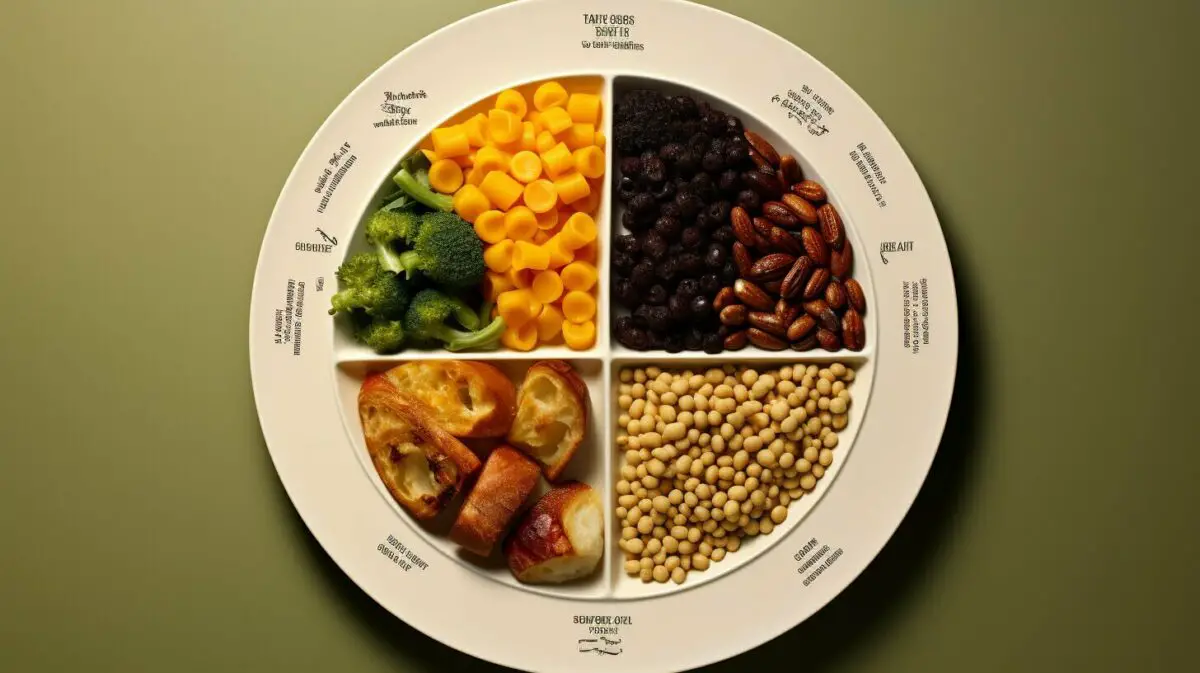
Carbohydrates are an essential part of a well-rounded diet, providing fuel for our bodies and supporting overall health. By understanding their caloric value and choosing the right types of carbohydrates, you can make choices that align with your health and wellness goals. Remember, moderation is key, and consulting with a healthcare professional or registered dietitian can provide personalized guidance for your specific dietary needs.
The Calorie Content of Protein
Turning our attention to protein, we find that it also contains 4 calories per gram, aligning with the calorie content of carbohydrates. Protein is an essential nutrient that plays a vital role in our overall health. It is a crucial building block for our bodies and is involved in muscle growth, repair, and various bodily functions.
When it comes to maintaining a healthy diet, understanding the calorie content of different macronutrients is key. Fats have the highest calorie content per gram with 9 calories, more than twice the calories found in protein and carbohydrates. Carbohydrates, like protein, contain 4 calories per gram, making them a significant source of energy in our diet. By balancing our intake of protein, fats, and carbohydrates, we can create a calorie deficit or surplus to support our weight goals.

| Macronutrient | Calories per Gram |
|---|---|
| Protein | 4 |
| Fats | 9 |
| Carbohydrates | 4 |
In order to calculate the calorie content of a food product, you can use the grams-to-calories conversion. This method involves multiplying the number of grams of each macronutrient by its respective calorie content per gram, and then summing the results. By understanding this conversion and knowing the calorie content of different macronutrients, you can make informed choices about your food intake and meet your energy requirements.
Using Grams-to-Calories Conversion for a Healthy Diet
Understanding the conversion from grams to calories allows us to make informed decisions for a healthy and balanced diet. When it comes to monitoring our energy intake, it’s important to consider the calorie content of different macronutrients. By knowing the grams-to-calories conversion rates for fats, carbohydrates, and protein, we can better manage our energy requirements and overall nutritional needs.
Let’s take a closer look at the conversion rates:
| Macronutrient | Calories per Gram |
|---|---|
| Fat | 9 calories |
| Carbohydrate | 4 calories |
| Protein | 4 calories |
As shown in the table above, fats have the highest calorie content per gram among the macronutrients, while carbohydrates and protein provide 4 calories per gram. This information is fundamental in maintaining a healthy weight and ensuring that we meet our energy requirements.
By utilizing the grams-to-calories conversion, we can optimize our food choices and create a well-balanced diet that meets our individual energy needs. Whether we’re aiming to lose weight, maintain our current weight, or build muscle mass, understanding the calorie content of different macronutrients empowers us to make mindful decisions about our food intake.
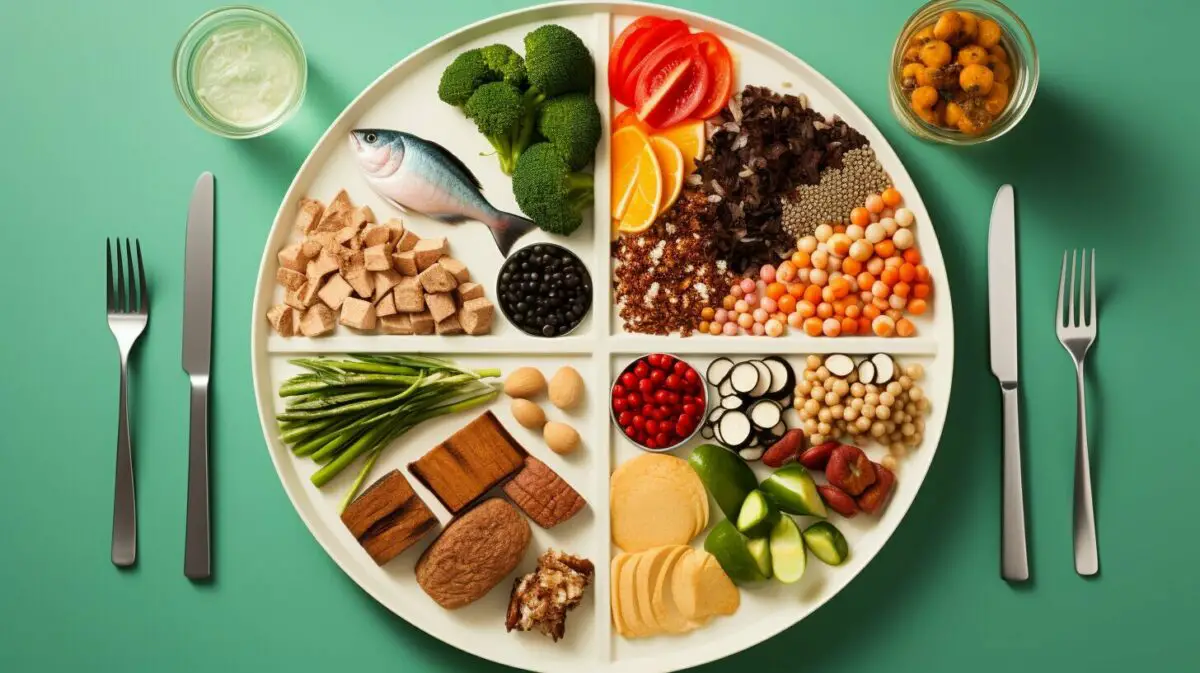
Checking Energy Requirements
It’s crucial to understand your energy requirements and how different macronutrients contribute to your daily calorie intake. By knowing the calorie content per gram of protein, fats, and carbohydrates, you can make informed choices about your diet and maintain a healthy weight.
To calculate your energy requirements, you need to consider factors such as age, weight, height, gender, and activity level. The estimated energy requirements (EER) are guidelines provided by reputable health organizations to help individuals determine their daily calorie needs.
Once you know your EER, you can adjust your macronutrient intake accordingly. As mentioned earlier, each gram of protein and carbohydrates contains 4 calories, while each gram of fat contains 9 calories. By understanding these conversion rates, you can tailor your diet to meet your specific energy needs.
Example: Calculating Energy Requirements
Let’s say your estimated energy requirement is 2000 calories per day. As a rough guideline, you may aim for a macronutrient distribution of 30% protein, 40% carbohydrates, and 30% fats.
Using this distribution, you can calculate the number of calories you should consume from each macronutrient. Here’s how:
| Macronutrient | Calories per gram | Percentage of distribution | Calories from macronutrient |
|---|---|---|---|
| Protein | 4 | 30% | 600 calories (150 grams) |
| Carbohydrates | 4 | 40% | 800 calories (200 grams) |
| Fat | 9 | 30% | 600 calories (67 grams) |
By following this macronutrient distribution, you will consume 2000 calories per day, which aligns with your energy requirements. Remember, these percentages and calculations are just examples, and individual needs may vary.
Understanding your energy requirements and how different macronutrients contribute to your daily calorie intake is crucial for maintaining a healthy diet. By balancing your macronutrient intake and considering the calorie density of foods, you can create a calorie deficit or surplus to support your weight goals.

Balancing your macronutrient intake is essential for achieving and maintaining a healthy weight. When it comes to weight management, it’s not just about the number of calories you consume, but also the quality of those calories. By understanding the calorie content per gram of different macronutrients, you can make informed choices and create a calorie deficit or surplus to support your weight goals.
Let’s take a closer look at the calorie content of the three macronutrients. Fats have the highest calorie content, with 9 calories per gram. Carbohydrates and protein, on the other hand, contain 4 calories per gram. This means that consuming a gram of fat would provide more than twice the calories compared to the same amount of protein or carbohydrates.
To put this into perspective, let’s consider an example. If you consume 100 grams of fat, you would be consuming a whopping 900 calories. On the other hand, consuming the same amount of protein or carbohydrates would only provide 400 calories. By understanding these differences, you can make choices that align with your energy requirements and weight goals.
| Macronutrient | Calories per Gram |
|---|---|
| Fat | 9 |
| Carbohydrates | 4 |
| Protein | 4 |
It’s important to note that achieving a healthy weight is not solely about calorie counting. It’s also vital to focus on the quality and nutrient density of the foods you consume. Including a variety of whole foods such as fruits, vegetables, lean proteins, and whole grains in your diet can provide the necessary nutrients while supporting weight management.
Remember, achieving a healthy weight is a journey that requires a holistic approach. By understanding the calorie content of macronutrients and making mindful choices, you can support your weight goals and overall well-being.

Let’s not forget that alcohol also contributes to our daily calorie intake and requires a separate calculation method. When enjoying a glass of wine or a cocktail, it’s important to be mindful of the calorie content. To determine the number of calories in alcoholic beverages, a specific conversion method needs to be applied.
First, we need to know the volume of the drink in milliliters. This information can usually be found on the label or provided by the bartender. Next, we need to find the alcohol by volume (ABV) percentage, which indicates the amount of pure alcohol in the drink. Typically, this percentage is also listed on the label.
To calculate the calories, we multiply the volume in milliliters by the ABV percentage and then multiply the result by 0.78924. This conversion factor accounts for the density of alcohol and helps us determine the calorie content. The final number obtained represents the calories in the alcoholic beverage.

| Alcoholic Beverage | Volume (ml) | ABV Percentage | Calories |
|---|---|---|---|
| Red Wine | 150 | 13% | 150 |
| Beer | 355 | 5% | 147 |
| Whiskey | 40 | 40% | 98 |
Remember, moderation is key when it comes to alcohol consumption. Not only can excessive drinking lead to additional calorie intake, but it also poses various health risks. It’s always advisable to enjoy alcoholic beverages responsibly and in moderation.
Summary:
Calculating the calories from alcohol requires a separate conversion method. By multiplying the volume in milliliters by the ABV percentage and then multiplying the result by 0.78924, we can determine the calorie content of different alcoholic beverages. It’s important to be mindful of our alcohol consumption and consider its impact on our overall calorie intake.
Understanding Calorie Definitions
Before delving further into calorie content, let’s clarify the different definitions of a calorie. In the context of nutrition, the term “calorie” is often used to mean kilocalories. A kilocalorie, also known as a large calorie, is the unit of measurement used to quantify the energy content of food. It is equivalent to 1,000 small calories or gram calories.
In scientific terms, a calorie (cal) is defined as the amount of energy required to raise the temperature of 1 gram of water by 1 degree Celsius. However, when it comes to our diets and the nutritional information we encounter, the term calorie typically refers to kilocalories (kcal).
The distinction between small and large calories is important to accurately interpret nutritional information. When you see the term calorie on a food label, it’s referring to kilocalories. For example, a food item with a listed calorie content of 200 actually contains 200 kilocalories or 200,000 small calories. This is crucial to keep in mind when planning your meals and monitoring your calorie intake.
“The distinction between small and large calories is important to accurately interpret nutritional information.”
To further illustrate this concept, consider a typical 2,000-calorie daily diet. In reality, this means consuming 2,000 kilocalories or 2,000,000 small calories. It’s essential to understand the difference between the two units of measurement to ensure you’re meeting your nutritional needs and maintaining a balanced diet.

When converting grams to calories, it’s important to know the calorie content of different macronutrients. This information allows us to calculate the total calorie content of a food product based on its macronutrient composition.
| Macronutrient | Calories per Gram |
|---|---|
| Fat | 9 calories |
| Carbohydrate | 4 calories |
| Protein | 4 calories |
To convert grams to calories, simply multiply the number of grams by the appropriate conversion rate for each macronutrient. For example, if a food contains 20 grams of fat, the fat content contributes 180 calories to the total calorie count of the product (20 grams x 9 calories/gram = 180 calories).
By using these conversion rates and summing the calorie contributions from each macronutrient, you can accurately determine the total calorie content of a food item. This knowledge is invaluable for making informed decisions about your diet and managing your calorie intake.
Converting Grams to Calories
Converting grams to calories involves multiplying the conversion rate for each macronutrient by the number of grams and summing the results. When it comes to nutrition, different macronutrients have varying calorie contents per gram. Fat, for example, contains 9 calories per gram, while both carbohydrates and protein contain 4 calories per gram.
To calculate the total calorie content of a food product, you’ll need to determine the number of grams for each macronutrient it contains. Then, using the appropriate conversion rate, multiply the grams of fat by 9, the grams of carbohydrates by 4, and the grams of protein by 4. Finally, sum these results to obtain the total number of calories in the food. This method allows you to accurately track your calorie intake and make informed dietary choices.
Understanding the conversion of grams to calories is valuable for managing your nutrition and maintaining a healthy lifestyle. By paying attention to the calorie content of different macronutrients, you can ensure you’re meeting your energy requirements. Whether you’re aiming to lose weight, gain muscle, or simply maintain overall well-being, this knowledge empowers you to make choices that align with your goals.
| Macronutrient | Calories per Gram |
|---|---|
| Fat | 9 |
| Carbohydrates | 4 |
| Protein | 4 |
As seen in the table above, fats have the highest calorie content per gram, followed by carbohydrates and protein. This information allows you to make conscious decisions about your macronutrient intake and balance your diet accordingly. By understanding the grams-to-calories conversion, you can take control of your nutrition and work towards achieving your health and wellness goals.
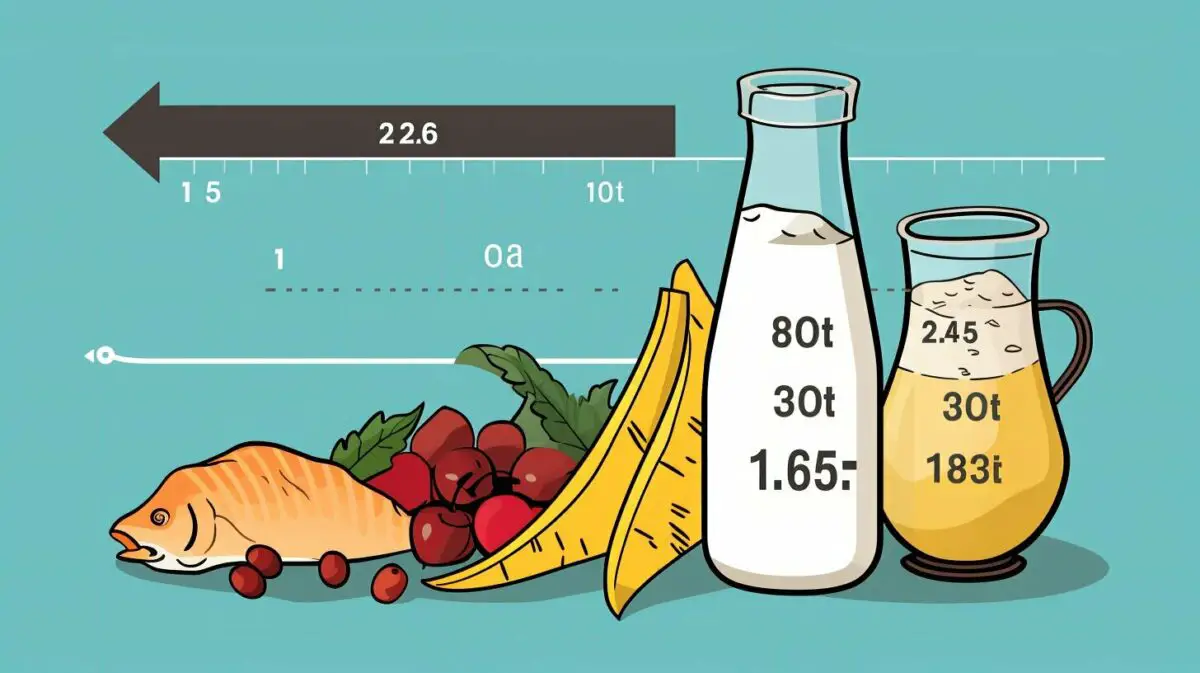
Disclaimer: The nutritional information provided in this article is for educational purposes only and should not replace professional advice. Consult with a registered dietitian or healthcare professional for personalized guidance.
The Importance of Protein in Your Diet
Protein is a fundamental nutrient that should be a part of our daily diet due to its significant role in various bodily functions. It serves as a building block for tissues, muscles, enzymes, and hormones, and plays a crucial role in the growth, repair, and maintenance of our cells. Including an adequate amount of protein in our diet is essential for overall health and well-being.
Not only does protein contribute to the physical structure of our bodies, but it also plays a key role in numerous biochemical processes. It aids in the transportation of nutrients and oxygen, helps regulate our metabolism, and supports a healthy immune system. Protein is especially important for athletes and individuals seeking to build or maintain muscle mass.
To meet our daily protein requirements, it is essential to consume a variety of protein sources. Good sources of protein include lean meats, poultry, fish, dairy products, legumes, nuts, and seeds. Including these high protein foods in our diet ensures that we obtain all the essential amino acids needed for optimal health.

| Food Source | Protein Content (per 100g) |
|---|---|
| Chicken Breast | 31g |
| Greek Yogurt | 10g |
| Almonds | 21g |
| Lentils | 9g |
| Tofu | 8g |
It’s important to note that individual protein needs may vary depending on factors such as age, weight, activity level, and overall health goals. Consulting with a healthcare professional or registered dietitian can help determine the optimal protein intake for your specific needs.
Incorporating protein-rich foods into our daily meals and snacks not only provides us with essential nutrients but also contributes to feeling full and satisfied. This can aid in managing weight and preventing overeating. So, be sure to include a variety of high protein foods in your diet to support your overall health and well-being.
Optimal Protein Intake and Sources
Achieving the optimal protein intake requires consuming a variety of protein-rich foods from different sources. Including lean protein options in your diet can help you meet your daily protein requirements while also managing your calorie intake. Lean protein sources are low in fat and provide essential amino acids necessary for muscle growth and repair.
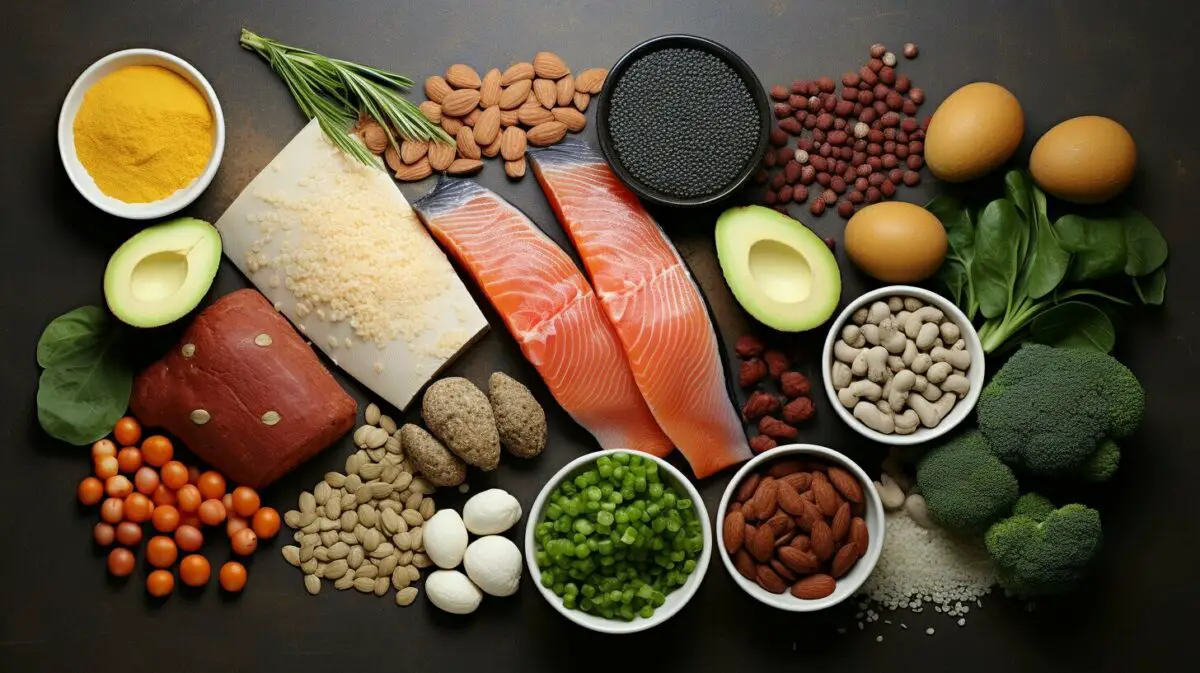
Here are some examples of high protein foods that can be incorporated into your diet:
- Skinless chicken breast: A 3-ounce serving of cooked, skinless chicken breast provides about 26 grams of protein.
- Egg whites: Egg whites are an excellent source of protein, with each large egg white containing around 3.6 grams of protein.
- Greek yogurt: Greek yogurt is a popular protein-rich option, with approximately 17 grams of protein in a single serving (about 170 grams).
- Salmon: This fatty fish not only provides heart-healthy omega-3 fatty acids but also packs around 22 grams of protein per 3-ounce serving.
- Lentils: Lentils are a plant-based protein source, offering approximately 18 grams of protein per cooked cup (198 grams).
Incorporating a variety of these protein sources into your meals can help ensure you receive the necessary protein to support your muscle growth, repair, and overall health.
Conclusion – How Many Calories in a Gram of Protein
In conclusion, the calorie content of protein is 4 calories per gram, making it a valuable and nutritious component of our diet. Understanding the conversion rates of different macronutrients is essential when converting grams to calories. Fats have the highest calorie content per gram, with 1 gram of fat containing 9 calories.
Carbohydrates and protein, on the other hand, contain 4 calories per gram. By utilizing the grams-to-calories conversion, we can make informed choices about our food intake and ensure we meet our energy requirements.
Calculating calories from alcohol follows a different conversion method. To determine the calories in alcoholic beverages, we multiply the volume in milliliters by the alcohol by volume percentage and then multiply the result by 0.78924.
It’s important to note that there are two definitions of calories: the small calorie or gram calorie (cal) and the large calorie or kilocalorie (kcal). In the context of nutrition, the term “calorie” is often used to mean kilocalories.
To convert grams to calories, we multiply the number of grams by the appropriate conversion rate for each macronutrient. By multiplying the conversion rate by the number of grams and summing the results, we can determine the total calorie content of a food product.
Understanding the calorie content of protein, along with fats and carbohydrates, can help us achieve a healthy weight and maintain a balanced diet. By considering the calorie density of foods and balancing macronutrient intake, we can create a calorie deficit or surplus to support our weight goals.
FAQ – How Many Calories in a Gram of Protein
Q: How many calories are in a gram of protein?
A: One gram of protein contains 4 calories.
Q: How many calories are in a gram of fat?
A: One gram of fat contains 9 calories.
Q: How many calories are in a gram of carbohydrates?
A: One gram of carbohydrates also contains 4 calories.
Q: How do I calculate the number of calories in alcohol?
A: To calculate the calories in alcohol, multiply the volume in milliliters by the alcohol by volume percentage, and then multiply the result by 0.78924.
Q: What is the difference between a small calorie and a large calorie?
A: The small calorie or gram calorie (cal) is a measurement unit, while the large calorie or kilocalorie (kcal) is commonly used in nutrition to represent a calorie. One kilocalorie is equal to 1,000 small calories.
Q: How do I convert grams to calories for different macronutrients?
A: To convert grams to calories, multiply the number of grams by the appropriate conversion rate for each macronutrient. For example, multiply the grams of protein by 4, the grams of fat by 9, and the grams of carbohydrates by 4. Sum the results to calculate the total calorie content.
Q: How can I use the grams-to-calories conversion for a healthy diet?
A: The grams-to-calories conversion can help you make informed choices about your food intake and meet your energy requirements for a healthy diet.
Q: How do I check my energy requirements?
A: You can calculate your daily energy requirements by understanding the calorie content per gram of different macronutrients and making adjustments to your diet accordingly.
Q: How can understanding the calorie content of macronutrients help me achieve a healthy weight?
A: By balancing your macronutrient intake and considering the calorie density of foods, you can create a calorie deficit or surplus to support your weight goals.
Q: What is the importance of protein in my diet?
A: Protein is crucial for muscle growth, repair, and overall health. Including an adequate amount of protein in your diet is essential for various bodily functions.
Q: What are some optimal protein sources?
A: Optimal protein sources include lean meats, poultry, fish, dairy products, legumes, and plant-based options. Consuming protein from a variety of sources ensures you meet your daily requirements.
Q: How does protein contribute to a healthy diet?
A: Protein is an essential macronutrient that provides energy, supports muscle growth and repair, and plays a role in various bodily functions. Including protein in your diet helps maintain a balanced and healthy eating plan.
Our Friends:
- https://www.omnicalculator.com/conversion/grams-to-calories
- https://www.wikihow.com/Convert-Grams-to-Calories
- https://www.inchcalculator.com/convert/gram-to-calorie-burned/
Related Recipes:
 How Many Calories Are in a Gram of Carbs? (Measurement Conversion Guide)
How Many Calories Are in a Gram of Carbs? (Measurement Conversion Guide)
 How Many Calories in a Gram of Fat? (Perfect Measurement Conversion Guide)
How Many Calories in a Gram of Fat? (Perfect Measurement Conversion Guide)
 How Many Grams Are in an Ounce? (Perfect Measurement Conversion Guide)
How Many Grams Are in an Ounce? (Perfect Measurement Conversion Guide)
 How Many Grams Are in a Pound? (Measurement Conversion Guide)
How Many Grams Are in a Pound? (Measurement Conversion Guide)
 How Many Grams Are in a Kilogram? (Perfect Measurement Conversion Guide)
How Many Grams Are in a Kilogram? (Perfect Measurement Conversion Guide)
 How Many Milligrams Are in a Gram? (Perfect Measurement Conversion Guide)
How Many Milligrams Are in a Gram? (Perfect Measurement Conversion Guide)
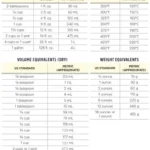 How Many Cups Are in a Liter: Unlocking the Mystery
How Many Cups Are in a Liter: Unlocking the Mystery
 How Many Grams in a Teaspoon? (Perfect Measurement Conversion Guide)
How Many Grams in a Teaspoon? (Perfect Measurement Conversion Guide)




